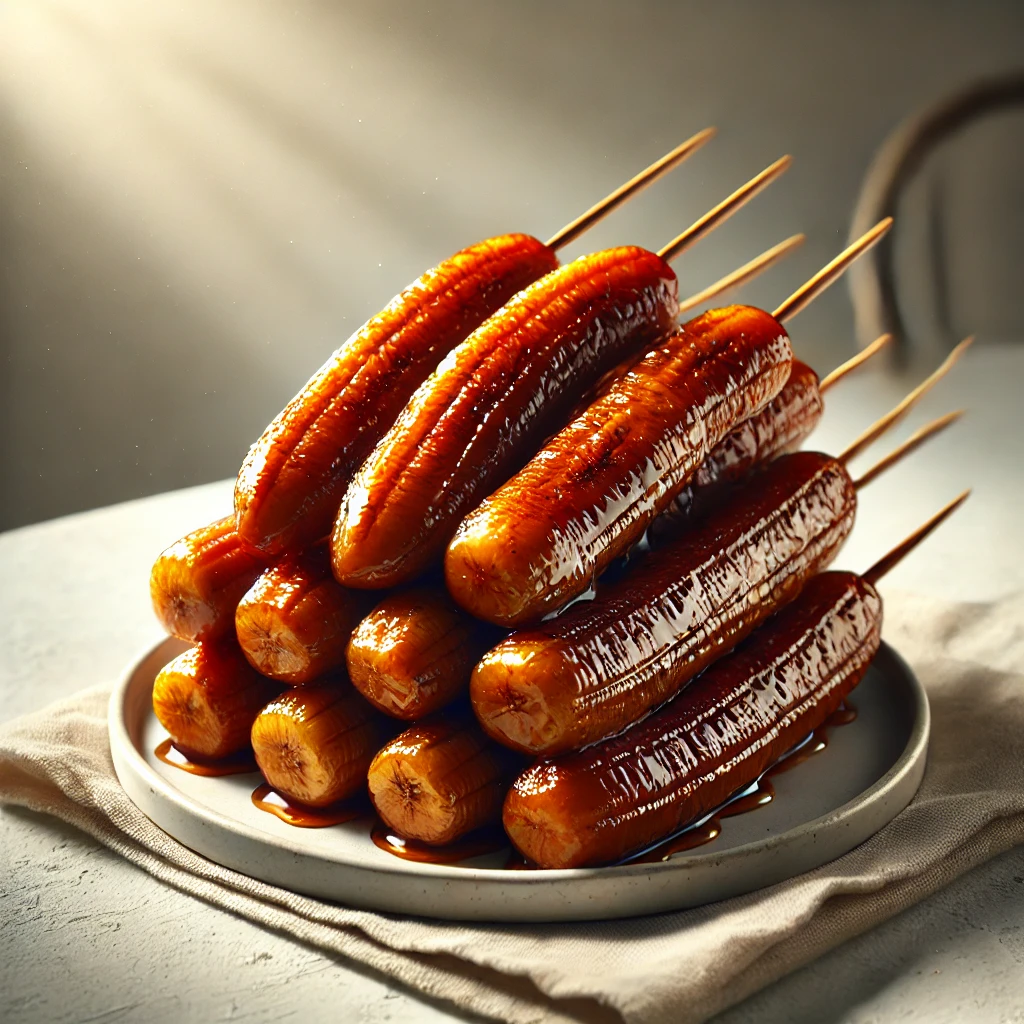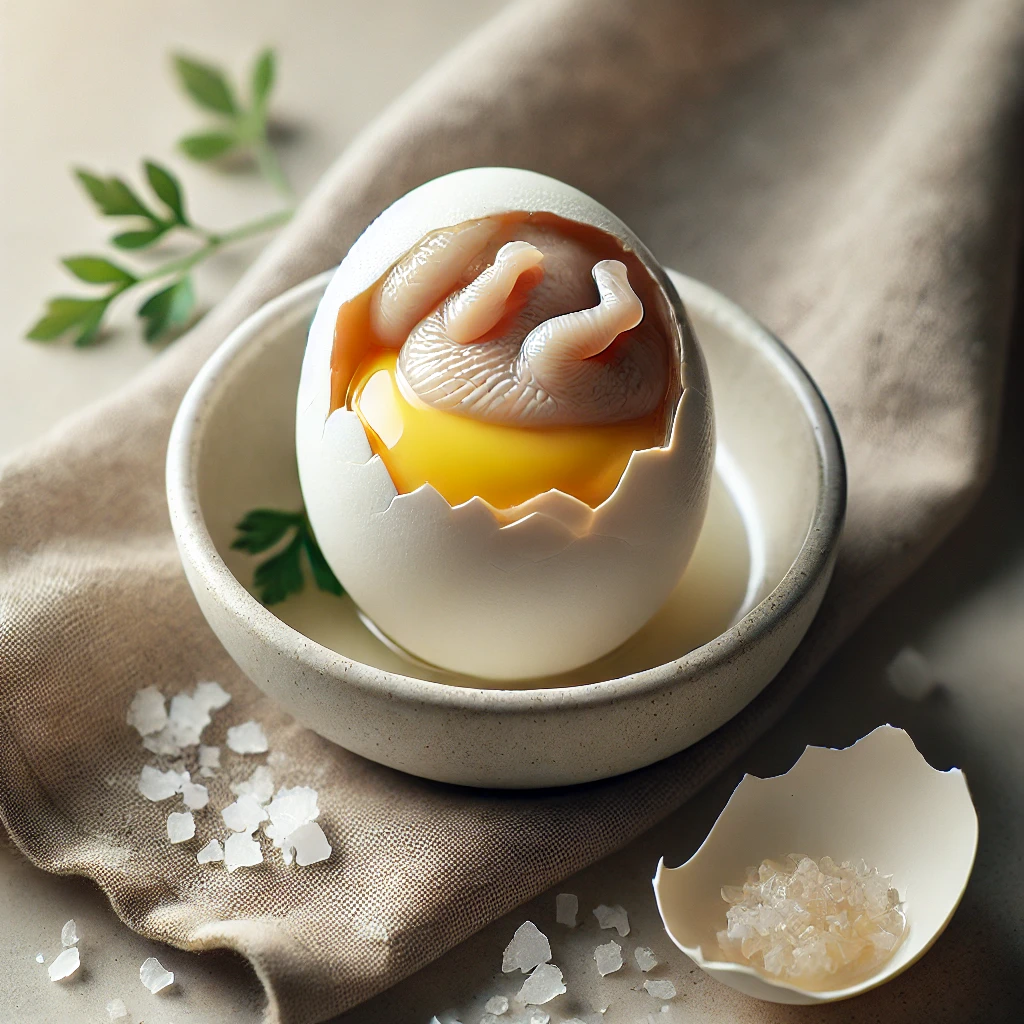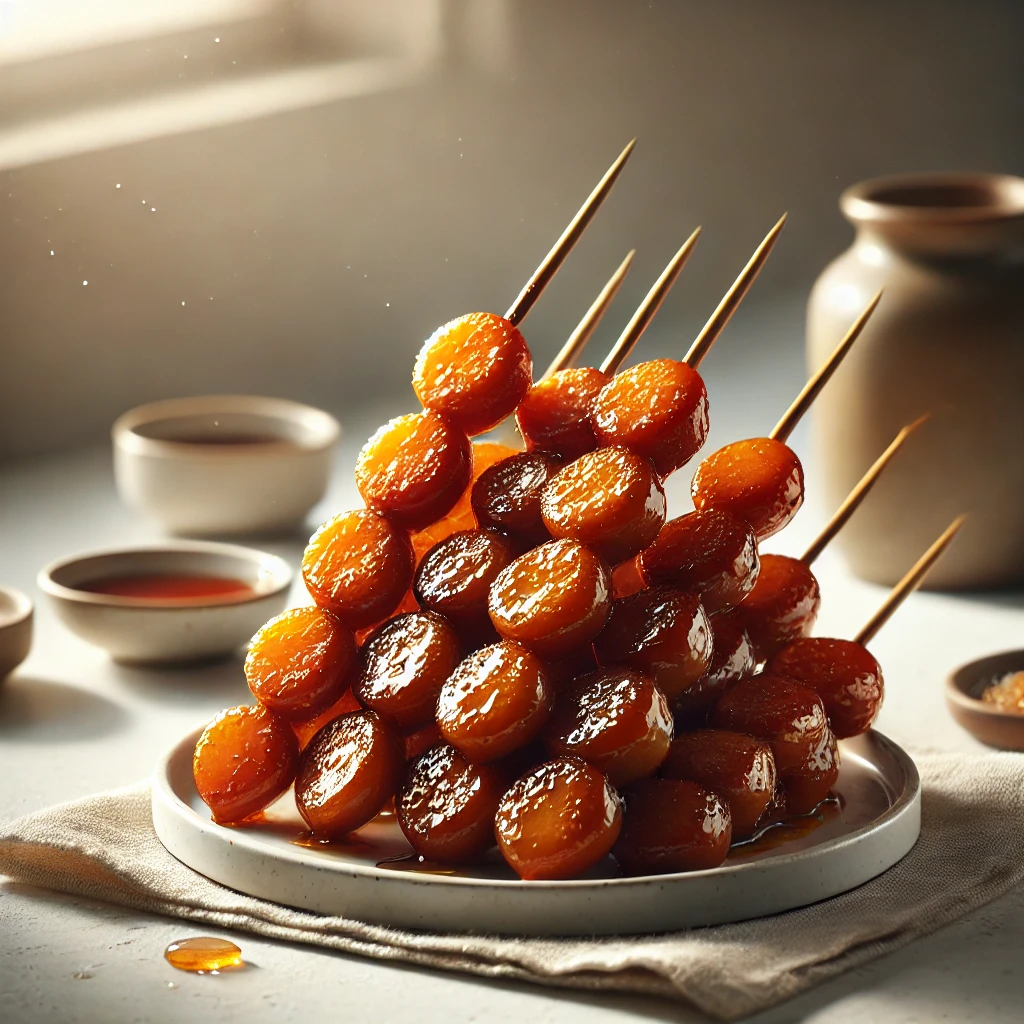Have you ever tasted a dessert that transports you to a bustling street corner in the Philippines, filled with the aroma of caramelized sugar and the sizzle of hot oil? If not, prepare to embark on a culinary journey with Banana Cue, a beloved Filipino street food that will tantalize your taste buds and warm your heart. This simple yet indulgent treat consists of deep-fried saba bananas coated in a crispy, caramelized sugar shell. The contrast between the soft, creamy interior and the crunchy exterior creates a textural symphony that’s hard to resist. Banana Cue isn’t just a snack; it’s a cultural icon that reflects the ingenuity and creativity of Filipino cuisine. Whether you’re looking for a unique dessert to impress your guests or a comforting treat to enjoy on a lazy afternoon, Banana Cue is sure to hit the spot. Best of all, this recipe is naturally vegan and gluten-free, making it accessible to a wide range of dietary preferences. So, let’s dive into the world of Banana Cue and discover how to bring this Filipino street food classic to your own kitchen!
Recipe Ingredients
To create this delightful treat, you’ll need just a few simple ingredients. Here’s what you’ll need to make Banana Cue for 4 servings:
| Ingredient | Quantity | Notes |
|---|---|---|
| Saba bananas | 8 pieces | Ripe but firm |
| Brown sugar | 1 cup | Packed |
| Vegetable oil | 2 cups | For deep frying |
| Bamboo skewers | 8 pieces | Optional, for serving |
Ingredient Notes:
- Saba bananas: If unavailable, you can substitute with plantains or regular bananas, though the texture and flavor will differ slightly.
- Brown sugar: Dark brown sugar works best, but light brown sugar can be used as well.
- Vegetable oil: Any neutral oil with a high smoke point, such as canola or peanut oil, can be used for frying.
Recipe Instructions
Follow these step-by-step instructions to create perfect Banana Cue:
- Prepare the bananas: Peel the saba bananas and cut them in half lengthwise if they’re particularly large. If using bamboo skewers, carefully insert them into the bananas now.
- Heat the oil: In a deep, heavy-bottomed pan or wok, heat the vegetable oil over medium-high heat until it reaches 350°F (175°C). Use a candy thermometer to ensure the correct temperature.
- Prepare the sugar coating: While the oil is heating, spread the brown sugar evenly on a large plate or shallow dish.
- Coat the bananas: Roll each banana piece in the brown sugar, ensuring it’s evenly coated. Shake off any excess sugar.
- Fry the bananas: Carefully lower 2-3 sugar-coated bananas into the hot oil. Fry for about 3-4 minutes, turning occasionally, until the sugar caramelizes and forms a crispy golden-brown coating.
- Remove and drain: Using a slotted spoon or tongs, remove the fried bananas from the oil and place them on a wire rack or paper towel-lined plate to drain excess oil.
- Repeat: Continue the process with the remaining bananas, adjusting the oil temperature as needed to maintain 350°F (175°C).
- Serve: Allow the Banana Cue to cool slightly before serving, as the caramelized sugar coating will be extremely hot.
Helpful Tips:
- Work in small batches to prevent overcrowding the pan and dropping the oil temperature.
- Be cautious when frying, as the hot oil may splatter when the sugar-coated bananas are added.
- If the sugar starts to burn in the oil, carefully remove it with a slotted spoon between batches to prevent a bitter taste.
Recipe Tips & Variations
To elevate your Banana Cue experience, consider these tips and variations:
Customization Tips:
- For a more complex flavor, add a pinch of cinnamon or nutmeg to the brown sugar before coating the bananas.
- Experiment with different types of sugar, such as muscovado or coconut sugar, for unique flavor profiles.
- Drizzle melted chocolate or sprinkle toasted coconut flakes over the finished Banana Cue for added indulgence.
Troubleshooting:
- If the sugar isn’t caramelizing properly, try increasing the oil temperature slightly.
- To prevent the bananas from becoming too soft, avoid using overripe fruits.
Storage Instructions:
Banana Cue is best enjoyed fresh and warm. However, if you have leftovers, store them in an airtight container at room temperature for up to 24 hours. To reheat, place them in a preheated 350°F (175°C) oven for 5-7 minutes to restore some crispiness.
Nutritional Information
While Banana Cue is undoubtedly a treat, it’s helpful to be aware of its nutritional content. Here’s an approximate breakdown per serving (2 pieces):
| Nutrient | Amount |
|---|---|
| Calories | 300 |
| Total Fat | 14g |
| Saturated Fat | 2g |
| Carbohydrates | 45g |
| Dietary Fiber | 3g |
| Sugars | 30g |
| Protein | 1g |
Please note that these values are estimates and may vary based on the exact ingredients and preparation method used.
The Cultural Significance of Banana Cue
Banana Cue isn’t just a delicious snack; it’s a significant part of Filipino food culture. This humble street food has been a staple in the Philippines for generations, reflecting the country’s resourcefulness and love for sweet treats. Saba bananas, the traditional choice for this dish, are abundant in the Philippines and have been cultivated for centuries. The practice of deep-frying and caramelizing these bananas emerged as a way to preserve the fruit and create a portable, satisfying snack for workers and students alike. In many Filipino communities, the sight and smell of Banana Cue being prepared by street vendors signal the end of the school or workday, offering a comforting treat to enjoy on the way home. This dish exemplifies the Filipino talent for transforming simple ingredients into something extraordinary, a trait that runs deep in the country’s culinary traditions. By preparing Banana Cue at home, you’re not just making a snack; you’re participating in a cherished cultural practice that has brought joy to countless people across the Philippines and beyond.
The Art of Perfecting Banana Cue
Mastering the art of Banana Cue requires practice and attention to detail. The key lies in achieving the perfect balance between the soft, creamy banana interior and the crispy, caramelized exterior. This balance is what sets apart a good Banana Cue from a truly exceptional one. One crucial factor is the ripeness of the bananas. Ideally, you want saba bananas that are ripe enough to be sweet and flavorful but still firm enough to hold their shape during frying. The sugar coating is another critical element. By using brown sugar, you’re not only adding sweetness but also introducing complex molasses notes that complement the banana’s natural flavors. The frying process is where the magic happens. As the sugar-coated banana hits the hot oil, the sugar begins to caramelize, creating that signature crispy shell. The challenge lies in cooking the banana through without burning the sugar coating. This is why maintaining the correct oil temperature is crucial. Too hot, and the sugar will burn before the banana cooks; too cool, and the banana will absorb too much oil, resulting in a greasy final product. With practice, you’ll develop an intuition for the perfect timing and temperature, allowing you to create Banana Cue that rivals those sold by the most skilled street vendors in the Philippines.
Serving Suggestions and Pairings
While Banana Cue is delicious on its own, there are several ways to elevate this treat into a more substantial dessert or snack. Here are some serving suggestions and pairings to consider:
- Ice Cream Companion: Serve Banana Cue alongside a scoop of vanilla ice cream for a delightful contrast of hot and cold, crispy and creamy.
- Filipino Merienda: Create a traditional Filipino afternoon snack spread by pairing Banana Cue with other local favorites like Turon (banana spring rolls) and Sago’t Gulaman (tapioca and jelly drink).
- Dipping Sauces: Offer a selection of dipping sauces such as chocolate sauce, caramel sauce, or even a tangy fruit compote to add an extra layer of flavor.
- Tropical Fruit Platter: Arrange Banana Cue on a platter with fresh tropical fruits like mangoes, pineapples, and lychees for a refreshing dessert spread.
- Beverage Pairings: Enjoy your Banana Cue with a hot cup of native Filipino chocolate (Tsokolate) or a cold glass of coconut water for an authentic experience.
Remember, Banana Cue is traditionally served on bamboo skewers, making it perfect for parties or gatherings where guests can easily grab and enjoy this handheld treat.
As we wrap up our journey into the world of Banana Cue, I’m reminded of the first time I tasted this Filipino delicacy. The crisp crackle of the caramelized sugar giving way to the soft, warm banana inside was nothing short of a revelation. It’s amazing how such a simple combination of ingredients can create something so utterly satisfying. Banana Cue is more than just a recipe; it’s a testament to the joy of street food and the culinary creativity of the Filipino people. I encourage you to try making Banana Cue in your own kitchen. Don’t be discouraged if your first attempt isn’t perfect – like any art form, it takes practice to master. As you fry each batch, filling your home with the intoxicating aroma of caramelized bananas, you’ll be creating not just a snack, but a connection to a rich culinary tradition. So gather your ingredients, heat up that oil, and embark on your own Banana Cue adventure. And once you’ve perfected your technique, why not share the love? Invite friends over for a Filipino-inspired dessert night, or surprise your family with this unique treat. Who knows? Banana Cue might just become your new go-to recipe for satisfying your sweet tooth. Happy cooking, and may your Banana Cue adventures be filled with sweetness and joy!
Disclaimer: This recipe blog post is based on information available up to 2019. While we strive for accuracy, culinary trends and nutritional understandings may have evolved since then. We encourage readers to consult current sources for the most up-to-date information. If you notice any inaccuracies, please report them so we can promptly update our content.




